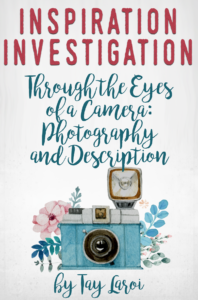 Growing up I was an absolute menace with a camera. Every museum, every landscape, every EVERYTHING was captured on film. I still have an old photo album from when I was a kid and a third of those images are of random city streets. Another third are of clouds and animals. The rest are friends and family members in mid-motion. Once digital cameras came out I was even worse since I didn’t have to worry about film. Now that I have my phone with me all the time, I’m sure I can get downright insufferable at times.
Growing up I was an absolute menace with a camera. Every museum, every landscape, every EVERYTHING was captured on film. I still have an old photo album from when I was a kid and a third of those images are of random city streets. Another third are of clouds and animals. The rest are friends and family members in mid-motion. Once digital cameras came out I was even worse since I didn’t have to worry about film. Now that I have my phone with me all the time, I’m sure I can get downright insufferable at times.
Well, maybe not insufferable, but my family has to wait time and time again for me to snap pictures of different buildings, vehicles, and clouds in multiple angles. Can’t imagine that’s fun.
I can’t help it. I know one day I’m going to be writing a scene, mapping a fictional country, putting a fantastical army into formation, or something else just as bonkers and I’ll need a visual reference. Characters will escape through narrow mountain passes and find safety in secluded valleys. I need to know what those look like. They’ll stand among aspens in the fall, marvel at the golden leaves, and conclude that the world isn’t so bad after all. I need to know what that looks like.
That’s why, instead of talking about famous photographers, journals, or magazines, I’m going to talk about you. Yes, you. You there with a camera on your phone.
Professional photographs are great for sure. They’re a fantastic window to the world, both the minuscule and grand, bringing out details, colors, and expressions we might miss in our daily lives. They can spark conversations, inspire stories and stir the depths of our hearts, but only you know how much of that your story needs and how much else it needs.
You’re the only one that knows if your story is going to need an image of the French Quarter in New Orleans. You’re the only one who knows if it needs mount-top views or the colors of river pebbles. Does your story need to capture all the colors, shapes, and designs of Japanese Tanabata banners? You tell us.
With the rise of social media, I think there’s a lot of pressure to make sure every picture we take is share worthy. We have to be in the right pose, the right filter, the right caption before we share it with the world, but when you take pictures of the things that are important to you and your stories, none of that matters. You’re going to share it with the world in a very different way. Think of those photos, no matter how simple or plain, as building blocks for the images people are going to build in their minds one day while reading your books.
So, next time you’re at a farmers market and think it would make a great meeting place for your next pair of love interests, snap a picture for later. Next time the setting sun hits the clouds just right, take a panorama to capture all its glory so your character can too. If you watch a parade, take a video to capture the cacophony of cheers and music. After all, the best parts of stories are the ones that truly capture life. It wouldn’t hurt to have a little extra material to draw from.

